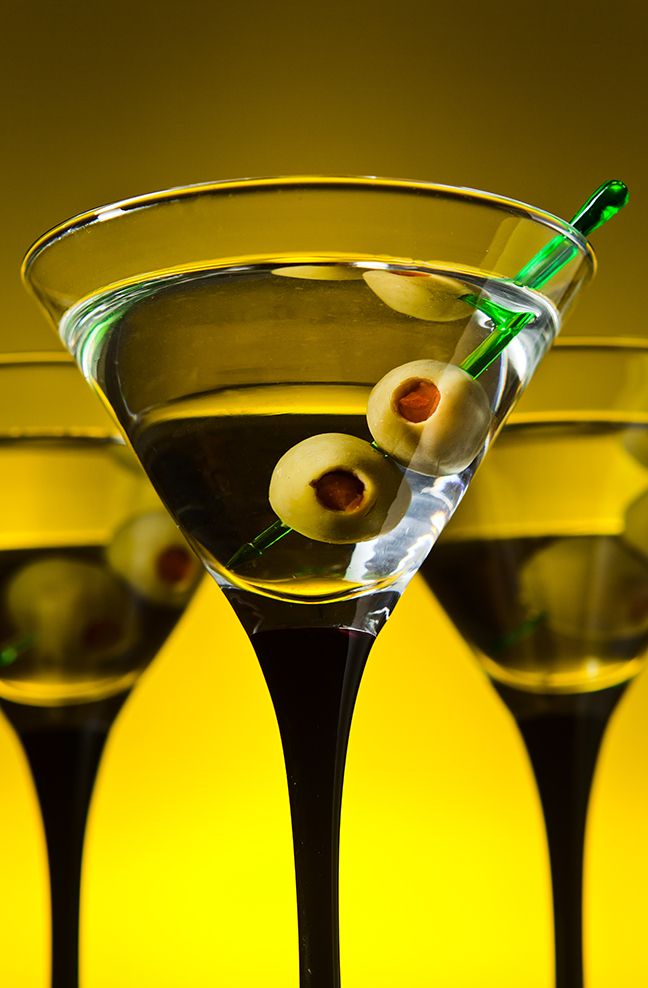It’s January and the New Year has officially begun. The celebrations of the busy holiday season have at last come to a close and we are all in dire need of a stiff drink. What could be better than the classic martini?
The martini is as all-American as baseball and apple pie. Symbolizing the epitome of American sophistication, the martini is a simple drink – gin and dry vermouth – served in a stemmed glass with a triangular bowl, with either a twist of lemon peel or an olive. Perfect.

The martini is a strong choice – no fruit juice or soda to water down the liquor. Just a few sips and you are well on your way to a better mood. Too many martinis and you are well on your way to a headache. As with all good things, temperance is key.
No one knows the exact origins of the martini, but according to lore, it was first created by a bartender in San Francisco in the 1850s and dubbed “The Martinez.” By far, the most famous martini drinker is “James Bond,” who preferred his martini “shaken not stirred.”
The method of blending is a point of contention among true martini aficionados. Some swear that a martini must be stirred to give a silky feel to the drink and not water it down. Shaking seems entirely too violent an act for a drink of such abject elegance. But others maintain that shaking better dissolves the vermouth into the cocktail and ices it down to the ideal temperature. Whatever your preference, the martini is a drink that never goes out of style.
The classic martini is made with 5 parts gin and 1 part vermouth. A notable trend of late is to add barely a drop of vermouth to a martini or to even simply request the bartender wave the bottle of vermouth above the glass. This is a mistake. Without this key aromatic ingredient, your martini will be nothing more than a shot of booze in a pretty glass. Allow the bartender to work his magic! A perfectly calibrated martini is all about craft and ingredients.
The martini is an intensely flavored drink. Gin is basically vodka distilled with a bouquet of potent botanicals including juniper. Vermouth is a fortified wine infused with spices and herbs such as sage, coriander, and allspice. Putting gin and vermouth together creates a highly spiced and refreshing cocktail.
As always, the better the ingredients, the better the martini. Hendricks Gin offers a unique gin flavored with cucumber and rose petals. The Botanist boasts a gin infused with more than 100 spices and herbs. Today, many people choose to swap out the gin for vodka, thereby creating a vodka martini or “vodkatini.”
Diehard martini lovers turn up their noses at the vodkatini insisting the drink is nothing without the gin. A vodkatini has few of the notable pungent herbal qualities of a gin martini and is more mellow in flavor. If you are a fan of vodka, try Chopin potato or rye vodka. The potato gives the spirit a lovely creamy quality and rye adds a delicate spiciness to the cocktail.
A perfectly calibrated martini relies on good vermouth. Favorites include Nouilly Prat, Cinzano, Dolin, and Martini and Rossi. When Ian Fleming wrote the James Bond sequel, “Casino Royale,” he daringly substituted Lillet, a French aperitif wine, for vermouth in Bond’s martini. Lillet is fortified with citrus liqueurs and quinine and produces a martini with a citrusy quality and slightly bitter finish. It is an excellent alternative to the classic vermouth.
Whatever your preference may be, enjoy your martinis in good health and moderation.
Cheers!






